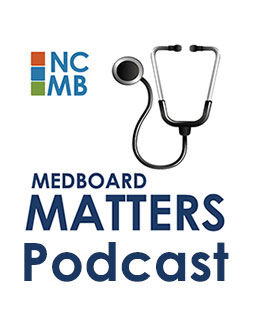Proposed position statement on the use of photography in the examination room
Categories: Position Statements Comments: 4 comments Print Friendly Version | Share this itemThe Board decided there was a need for such a statement after encountering some issues with photography and video that came to attention through the Board’s review of enforcement cases.
NCMB will accept licensee feedback on the proposed position statement through June 16. Comments may be emailed to todd.brosius@ncmedboard.org.
Policy for the Use of Audio or Visual Recordings in Patient Care
The Board recognizes that there may be valid reasons for licensees to make audio or visual recordings of patients during a healthcare encounter. However, such recordings must be made for appropriate professional reasons and should employ safeguards that protect a patient’s autonomy, privacy, confidentiality, and dignity. In instances where a patient may be asked to disrobe, the patient should be provided an opportunity to disrobe beyond the view of any camera.
Recordings that could lead to disclosure of the patient’s identity constitute protected health information and must be managed and transmitted in a manner that complies with HIPAA requirements.
Informed Consent
Prior to an audio or visual recording being made of a patient, licensees should ensure that they have obtained the patient’s informed consent. The informed consent should be documented in the medical record and should allow the patient an opportunity to discuss any concerns before and after the recording. The patient should also be informed:
- 1. Of the purpose of the recording and its use;
2. That the recording is voluntary and that a refusal to be recorded will not affect the patient’s care;
3. That the patient may withdraw consent to be recorded at any time and what will be done with any prior recordings;
4. Of the possibility of accidental or deliberate dissemination during the acquisition or storage of the information.
Post-recording Responsibilities
A licensee who has made an audio or visual recording of a patient must ensure that:
- 1. Any recording is used only for the purpose for which the patient consented;
2. Patients are given the opportunity to see the recording if they so wish; and
3. Recordings are given the same protections as other medical records against improper disclosure.
Comments on this article:
Sometimes surgeons used videos of operations for teaching; sometimes physicians take pictures of rashes for diagnostic purposes. These would fit under the proposed rule, even if not of direct benefit to the patient. I think the Board should include a sample consent form with ithis regulation
By Kim Masters on Jun 06, 2017 at 3:07pm
I agree with the above. There should also be a provision where the provider has the right to refuse the examination if the examinee wishes to record either by audio or photography (still or video) of the encounter.
This issue arises when the examination is being performed as part of an Independent Medical Examination which which often has adversarial overtones and potentially litigious clients.
At least there should be prior notification of the desire of the examinee’ s plan to do same ahead of time and the practitioner provided with a copy.
There is too much chance of poor lighting, editing, camera angles, distance, and overall quality affecting the outcome.
When the state of New York permittted clients to record the examination without even notification of the practitioner - essentially in secret- I terminated my relationship with the state of New York to perform such examinations.In the proposed N.C. Regulation, I think it would be a good idea to incorporate a clause that - IF the patient/examinee - desires, they be provided with a copy of the images.
Basically a good idea with refinements,
Robert Blake, MD, CIME
Gastonia, NBy Robert Blake, MD on Jun 06, 2017 at 4:28pm
How does this position apply to a “mugshot” photo that is taken for attachment to the electronic medical record? Specifically, should written informed consent be obtained for this purpose, or is a head-and-shoulders portrait photo simply considered an element of identifying personal information similar to the usual demographics that are collected? I think that the latter is more reasonable.
By Craig Steffee, MD on Jun 07, 2017 at 8:04am
We have encountered circumstances when staff used personal, mobile devices for photography in the clinical setting. This has raised concerns from auditors that there are no or inadequate audit trails of how or where an image is subsequently used. It may be prudent to stipulate that imaging in a clinical setting may only be done using devices owned by the practice with SOP that prevent personal use of such devices.
By Dante Landucci MD on Jun 22, 2017 at 12:10pm
As for the earlier comment about taking my photograph as part of my medical record, I perceive doing so without the option to decline as unacceptably intrusive. When there may be any question, clinical procedures already permit confirmation of identity by asking relevant questions and/or by requesting select documents that may include photo ID. Clinical staff are not responsible for confirmation of identity. This is a law enforcement activity that, when undertaken by healthcare personne, risks intrusion into the fiduciary healthcare relationship and/or may not be conducted correctly. Furthermore, clinical staff have an obligation to refer matters for law enforcement consideration when there is suspicion of felonious criminal activity.
